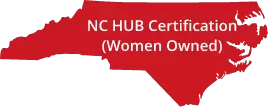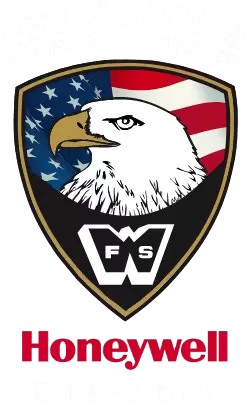Waterless Ways of Protecting High Value Equipment & Property
Water-based fire suppression systems (sprinklers) are designed to protect people and structures. But when it comes to protecting high value machinery, computers and other electronic equipment, water can be more damaging than the fire itself! William Fire Sprinkler partners with Janus Fire Systems to provide clean agent, or special hazard, fire suppression systems that extinguish fires without the use of water.
Clean Agent Fire Suppression System FAQs
Clean agent fire suppression systems are ideal for facilities with sensitive equipment or critical assets. Data centers, telecommunication rooms, medical labs, and archives often use these systems, as they extinguish fires without leaving residue or damaging electronics. Museums and art galleries also benefit from clean agents, preserving valuable artifacts. These systems are highly effective in areas where water-based suppression could cause significant damage to assets and operations.
Janus Fire Systems is a division of Amerex Corporation, the world’s largest and most innovative manufacturer of hand portable and wheeled extinguishers for commercial and industrial applications. Janus Fire Systems produces High Quality, ISO-9001 certified products for the protection of all types of special hazards.
Clean Agent Suppression Systems using Novec 1230 Fluid
3M™ Novec™ 1230 fire protection fluid is a next generation clean agent Halon alternative. It combines outstanding extinguishing performance with an excellent environmental profile. Novec 1230 fire protection fluid has zero ozone depletion potential, a global warming potential of one, a five day atmospheric lifetime and a large margin of safety for occupied spaces. Novec 1230 fire protection fluid extinguishes fire primarily by removing heat from the fire. It is also electrically non-conductive.
- Outstanding Extinguishing
- Excellent Environmental Profile
- Zero Ozone Depletion Potential
- Global Warming Potential of One
- Safe for Occupants
- Electrically Non-Conductive
Typical areas of Novec 1230 fire protection
- Computer Rooms
- Data Storage Facilities
- Telecommunications
- Oil & Gas Petrochemical Facilities
- Museums
- Medical Facilities
- Manufacturing Facilities
- Storage Areas
Carbon Dioxide Suppression Systems
Carbon Dioxide Suppression Systems Carbon dioxide (CO2) is a colorless, odorless and chemically inert gas that is both readily available and electrically non-conductive. It extinguishes fire primarily by lowering the level of oxygen that supports combustion in a protected area. This mechanism of fire suppression makes CO2 suppression systems highly effective, requiring minimal clean-up, but should be used in normally unoccupied hazard locations or otherwise avoided by personnel when discharged. CO2 suppression systems may utilize the gas through a total flooding approach but carbon dioxide is also the only gaseous agent that may be utilized through local application. Carbon dioxide may be stored in either high pressure spun steel cylinders (HPCO2 suppression systems) or low pressure light wall refrigerated tanks (LPCO2 suppression systems). Readily Available Agent
- Minimal Cleanup
- Total Flooding
- Local Application
- Industrial Fire Protection
- Electrically Non-Conductive
Carbon dioxide may be stored in either high pressure spun steel cylinders (HPCO2 suppression systems) or low pressure light wall refrigerated tanks (LPCO2 suppression systems)
Typical areas of Carbon Dioxide fire protection
- Flammable Liquid Storage
- Transformers
- Rotating Electrical Equipment
- Power Generation
- Metal Processing Facilities
- Printing Industry
- Paint Mix
- Machining Facilities
FM-200 Suppression Systems
FM-200® is a clean, colorless and environmentally friendly fire suppression agent that is electrically non-conductive and safe for humans. It extinguishes flames primarily through heat absorption, leaving no residue, thus minimizing downtime after a fire and making FM-200 suppression systems accepted and respected worldwide with over one hundred thousand installations in more than seventy countries.
- Environmentally Friendly
- Most Widely Used Clean Agent
- Over 100,000 Installations
- Outstanding Extinguishing
- Safe for Occupants
- Electrically Non-Conductive
(FM-200 is a registered trademark of E.I. du Pont de Nemours and Company)
Typical areas of FM-200 fire protection
- Telecommunication Facilities
- Computer Rooms
- Control Rooms
- Museums
- Historical Archive Storage
- Art Galleries
- Pharmaceutical & Medical Facilities
- Record Storage Facilities
Clean Agent Fire Suppression: Room Integrity Testing
The ability for the gaseous agent to be retained in the protected room for an extended period of time is critical to the performance of any total flooding clean agent fire extinguishing system. NFPA 2001, Standard on Clean Agent Fire Extinguishing Systems, requires that a minimum concentration of 85% of the adjusted minimum design concentration be held at the highest level of combustibles for a minimum period of 10 minutes. Those installing these systems are required to perform a Room Integrity Fan Test to assure the protected room will hold the agent for the required period of time.
A Room Integrity Fan Test, also known as a Door Fan Test, is simply a way to measure the leakage of an enclosure. A large fan is temporarily installed in the doorway of the room to be tested, with the fan blowing into the room (pressurizing the room). The fan speed is adjusted to obtain flow pressure equivalent to the pressure exerted during a fire suppression system discharge. The fan is then reversed on the door to draw air from the room (depressurizing the room). The airflow and pressure readings obtained are entered into a computer program designed to calculate the equivalent leakage area (ELA) for the room. When a room has a suspended (drop) ceiling, then the below ceiling leakage area (BCLA) is calculated as one-half the total ELA and is used in the calculations for retention time.
Given that most gaseous chemical agents used for fire suppression are heavier than air, the agent will begin to leak out of any lower level penetrations left unsealed. The rate at which the agent leaks is directly proportional to the amount of leakage at higher elevations of the room. As the agent leaks out, fresh air replaces it from above. The point where fresh air above meets the concentration air mixture is called the descending interface. Because of its nature, a Door Fan Test will always calculate the worst case leakage for the room. It draws air through leaks in the room and under the floor as well as above the suspended ceiling to predict the descending interface of the suppression agent. The length of time it takes for the descending interface to reach the minimum protected height identifies the concentration hold time.
Importance of Room Construction
Most rooms housing mission critical equipment are constructed with the perimeter walls extending from “slab to slab” in a manner that creates a fire rated barrier around the room. Because of their construction, these rooms will have fewer leaks and have a much greater chance of passing a standard Room Integrity Fan Test. However, it is possible to achieve a successful test in a room where the perimeter walls do not extend from “slab to slab” but instead extend only to above the suspended ceiling. Rooms like this with large overhead leaks will not pass a standard door fan test but can be successfully tested by other means. Experience has shown that enclosures of this type are capable of retaining clean agents for a prolonged period of time.
When preparing a room to retain a gaseous fire suppression agent, the walls and slab must be inspected for penetrations and leakage points. All areas of concern must be properly sealed with fire retardant materials and doors fitted with pressure seals around the jams and threshold.
Call Williams Fire Sprinkler (252) 792-8196 today. We are a factory authorized distributor of Janus Fire Systems. Let us help you protect your home or facility from flames.

